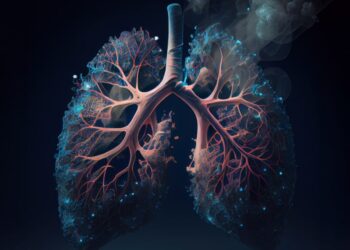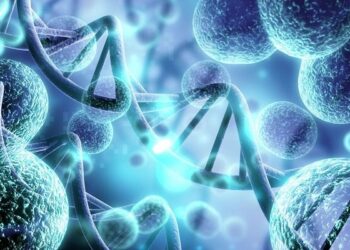AbbVie a global biopharmaceutical company, announced that the U.S. FDA granted Rare Pediatric Disease Designation for ABT-414, an investigational antibody drug conjugate (ADC) targeting the epidermal growth factor receptor (EGFR), for the treatment of pediatric patients with EGFR-amplified Diffuse Intrinsic Pontine Glioma (DIPG), known to be highly aggressive and difficult to treat brain tumors found at the base of the brain.1
Though brainstem tumors are extremely rare among adults, they comprise approximately 10-15 percent of all pediatric brain tumors. DIPG is the most common subtype of tumor in this anatomical region and the second most common malignant brain tumor of childhood, with an estimated 200-400 children affected each year in the United States.2,3,8
The FDA granted the Rare Pediatric Disease Designation based on a proposed pediatric sub-study “nested” within the ongoing Phase 2 study of ABT-414 in adults with recurrent EGFR-amplified glioblastoma, conducted in collaboration with the European Organization for Research and Treatment of Cancer (EORTC).4,5
“Pediatric patients with high grade gliomas have a rare and fatal disease.2 This Rare Pediatric Designation, a first for AbbVie, is an important advancement as we continue to evaluate ABT-414 and its potential to help this group of patients who desperately need a new treatment option,” said Gary Gordon, M.D., vice president, oncology clinical development, AbbVie. “The proposal of including a nested cohort within an adult global trial is an endeavor that we hope may bring more treatments to pediatric patients.”
About ABT-414
ABT-414 is an investigational monoclonal antibody drug conjugate (ADC) targeting the epidermal growth factor receptor (EGFR) developed by AbbVie researchers with components in-licensed from Life Science Pharmaceuticals, Inc. and Seattle Genetics.6 AbbVie is evaluating it for the treatment of adult patients with EGFR-amplified glioblastoma, an aggressive malignant primary brain tumor.6,7 In 2014, the U.S. Food and Drug Administration (FDA) and the European Medicines Agency granted Orphan Drug Designation for the treatment of adult glioblastoma and glioma, respectively.4,5 In 2016, the FDA granted Rare Disease Designation to ABT-414 for the treatment of pediatric patients with EGFR-amplified Diffuse Intrinsic Pontine Gliomas (DIPG). ABT-414 is an investigational compound and its efficacy and safety have not been established by the FDA or any other health authority.
About Pediatric High Grade Gliomas
Diffuse Intrinsic Pontine Glioma (DIPG) is a type of high grade glioma (HGG).8 HGG represents one of the most common central nervous system (CNS) tumors among adults; however, they comprise only approximately 8-12 percent of all CNS tumors in pediatric patients.2 Pediatric HGG are highly aggressive tumors that account for a significant amount of morbidity and mortality among children.2Despite numerous treatment approaches, five-year survival outcomes range from 15-35 percent and the majority of children succumb to their disease.2,9
About Glioblastoma
Glioblastoma is the most common and most aggressive type of malignant primary brain tumor.7 Prior to diagnosis, patients may experience headache, vision problems, nausea/vomiting, personality changes and seizures.7 For adults with more aggressive glioblastoma, treated with concurrent Temozolamide and radiation therapy, median survival is about 14.6 months.9 Treatment for glioblastoma remains challenging.7 Standard treatment is surgical resection, radiotherapy and concomitant adjunctive chemotherapy.9
About AbbVie in Oncology
AbbVie is striving to outsmart cancer by working with scientists, physicians, industry peers, patient advocacy groups and most importantly patients, to discover, develop and provide new therapies that will have a remarkable impact on the lives of people around the world affected by cancer. Our goal is to provide medicines that make a transformational improvement in cancer treatment and outcomes for cancer patients. By exploring and investing in new pathways, technologies and approaches, AbbVie is breaking ground in some of the most widespread and difficult-to-treat cancers. We are also exploring solutions to help patients obtain access to our cancer medicines. With the acquisition of Pharmacyclics in 2015 and Stemcentrx in 2016, and through several collaborations, AbbVie’s oncology portfolio consists of marketed medicines and a pipeline containing multiple new molecules being evaluated worldwide in nearly two hundred clinical trials in 20 different tumor types. For more information about AbbVie Oncology, please visit https://abbvieoncology.com.
About AbbVie
AbbVie is a global, research-based biopharmaceutical company formed in 2013 following separation from Abbott Laboratories. The company’s mission is to use its expertise, dedicated people and unique approach to innovation to develop and market advanced therapies that address some of the world’s most complex and serious diseases. Together with its wholly-owned subsidiary, Pharmacyclics, AbbVie employs more than 28,000 people worldwide and markets medicines in more than 170 countries. For further information on the company and its people, portfolio and commitments, please visit www.abbvie.com. Follow @abbvie on Twitter or view careers on our Facebook or LinkedIn page.
1 Warren, K.E., Diffuse intrinsic pontine glioma: poised for progress. Front Oncol. 2012; 2: 205.
2 Fangusaro, J. Pediatric high grade glioma: a review and update on tumor clinical characteristics and biology. Front Oncol. 2012; 2: 105.
3 Central Brain Tumor Registry of the United States (2010) CBTRUS Statistical Report: Primary Brain and Central Nervous System Tumors Diagnosed in the United States in 2004-2006 (Central Brain Tumor Registry of the United States, Hinsdale, IL).
4 U.S. Food and Drug Administration (2014). Orphan Drug Designations and Approvals.https://www.accessdata.fda.gov/scripts/opdlisting/oopd/OOPD_Results_2.cfm?Index_Number=433214. Accessed May 17 2016.
5 European Medicines Agency (2014). Public summary of opinion of orphan designation. http://www.ema.europa.eu/docs/en_GB/document_library/Orphan_designation/2014/09/WC500171954.pdf. Accessed May 17, 2016.
6 Van Den Bent, M et al. Efficacy of a novel antibody-drug conjugate (ADC), ABT-414, as monotherapy in epidermal growth factor receptor (EGFR) amplified, recurrent glioblastoma (GBM). Poster presentation #2542; presented at the 52nd Annual Meeting of the American Society of Clinical Oncology (ASCO) in Chicago, Illinois, June 5, 2016.
7 Omuro, A. & DeAngelis, L. Glioblastoma and Other Malignant Gliomas: A Clinical Review. JAMA. 2013;310(17):1842-1850.
8 MacDonald, T.J., Aguilera, D., & Kramm, C.M. Treatment of high-grade glioma in children and adolescents. Neuro-Oncology. 2011; 13(10): 1049–1058.
9 American Brain Tumor Association (2014). Glioblastoma (GBM). http://www.abta.org/brain-tumor-information/types-of-tumors/glioblastoma.html. Accessed on May 17, 2016.
Contact(s)
AbbVie U.S. Media: Jack Hirschfield
jack.hirschfield@abbvie.com
(224) 458-0943
AbbVie Global Media
Dave Freundel
david.freundel@abbvie.com
(224) 358-6576
Investors
Liz Shea
liz.shea@abbvie.com
(847) 935-2211`

















